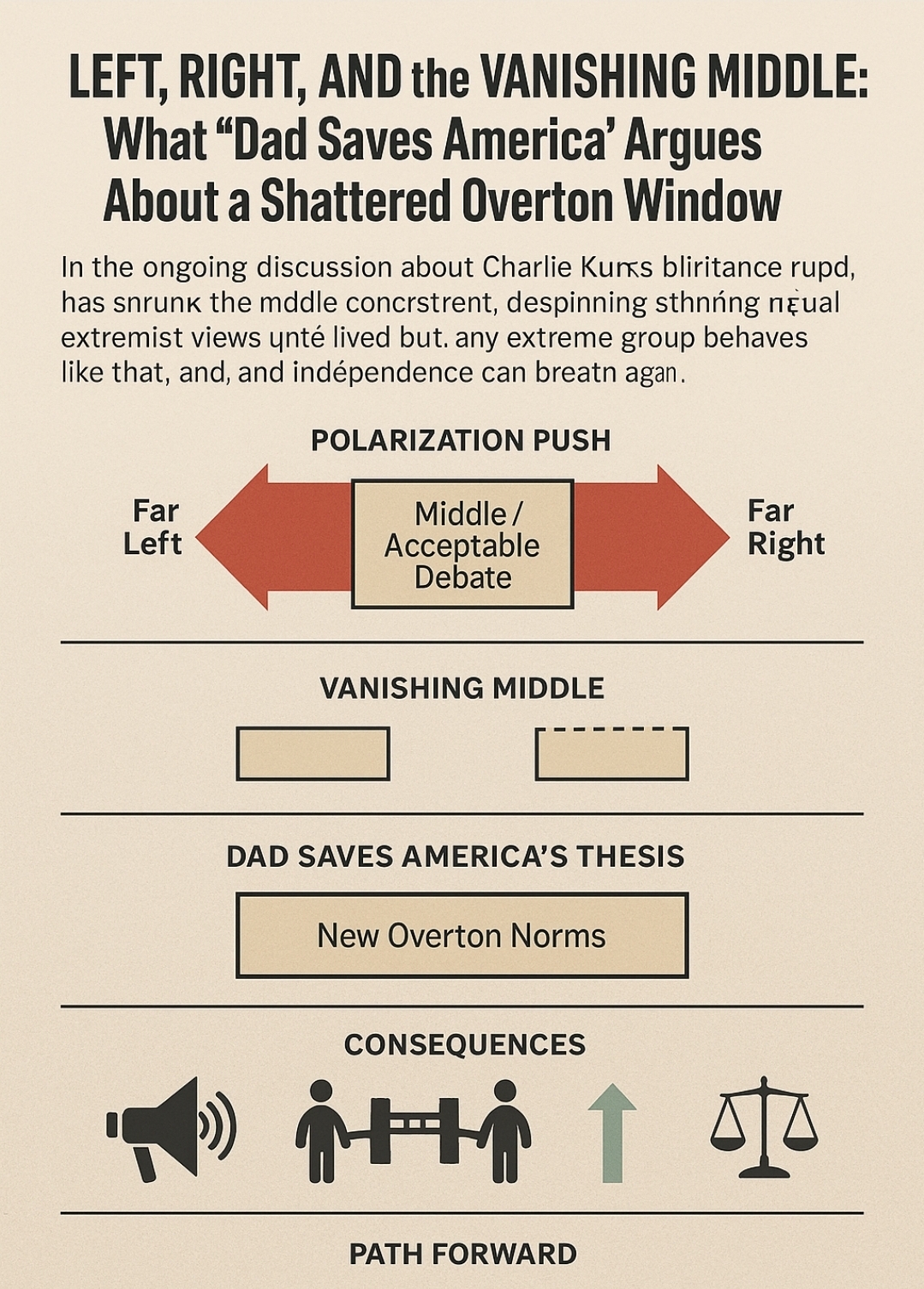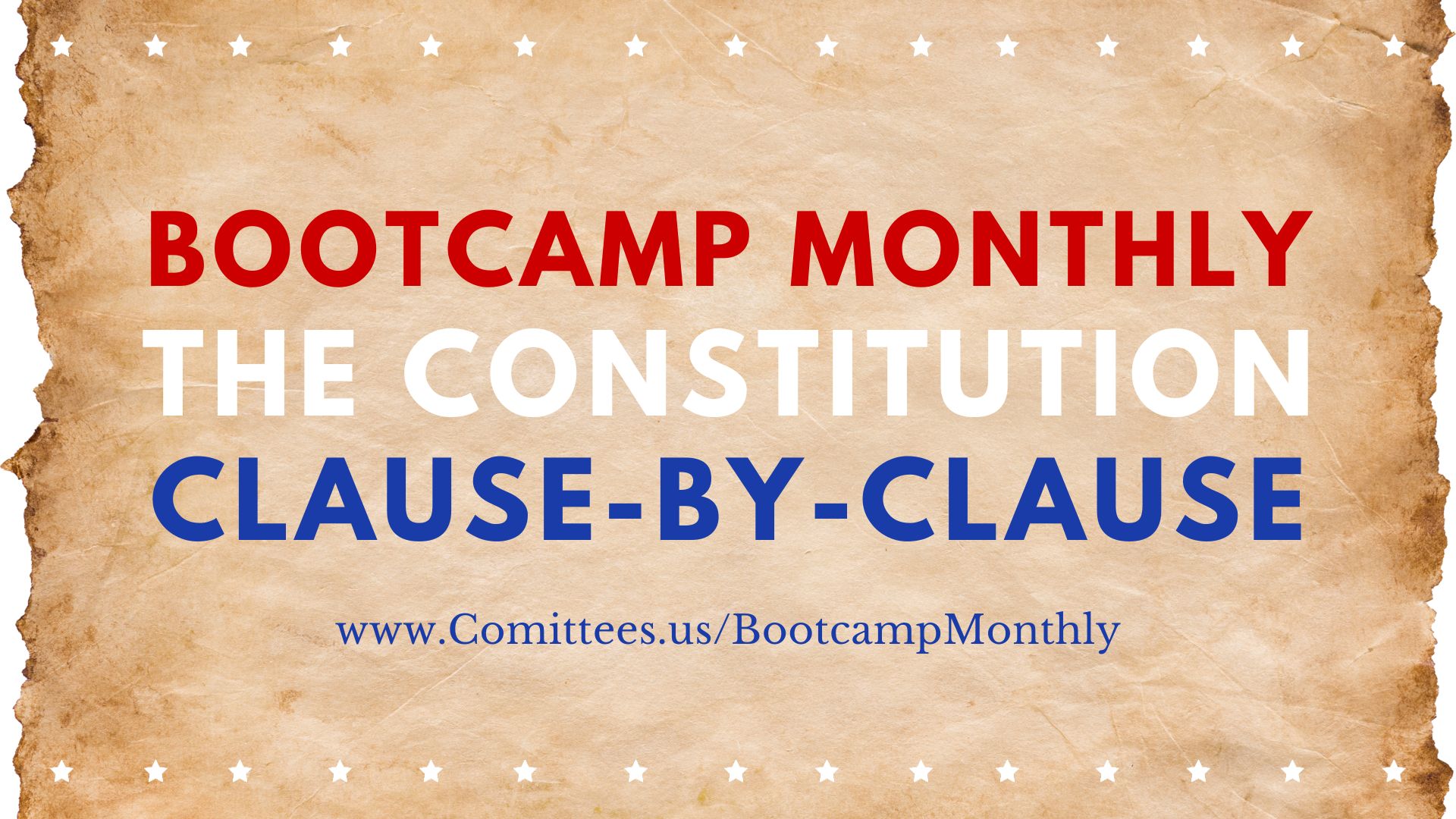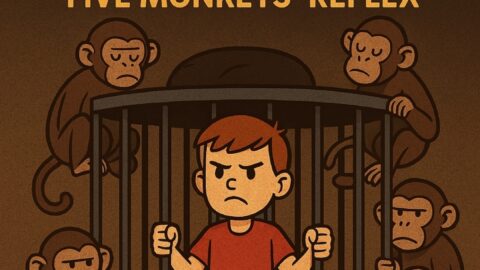Papola re-explains the Overton window: ideas move from “unthinkable” → “radical” → “acceptable” → “policy.” His worry isn’t mere rhetorical excess; it’s survey data suggesting very liberal respondents are notably more likely than very conservative ones to endorse political violence as “sometimes justified.” Caveats apply to any single poll, but his practical point stands: if violence edges into the “thinkable,” the window isn’t just shifting—it’s cracking.
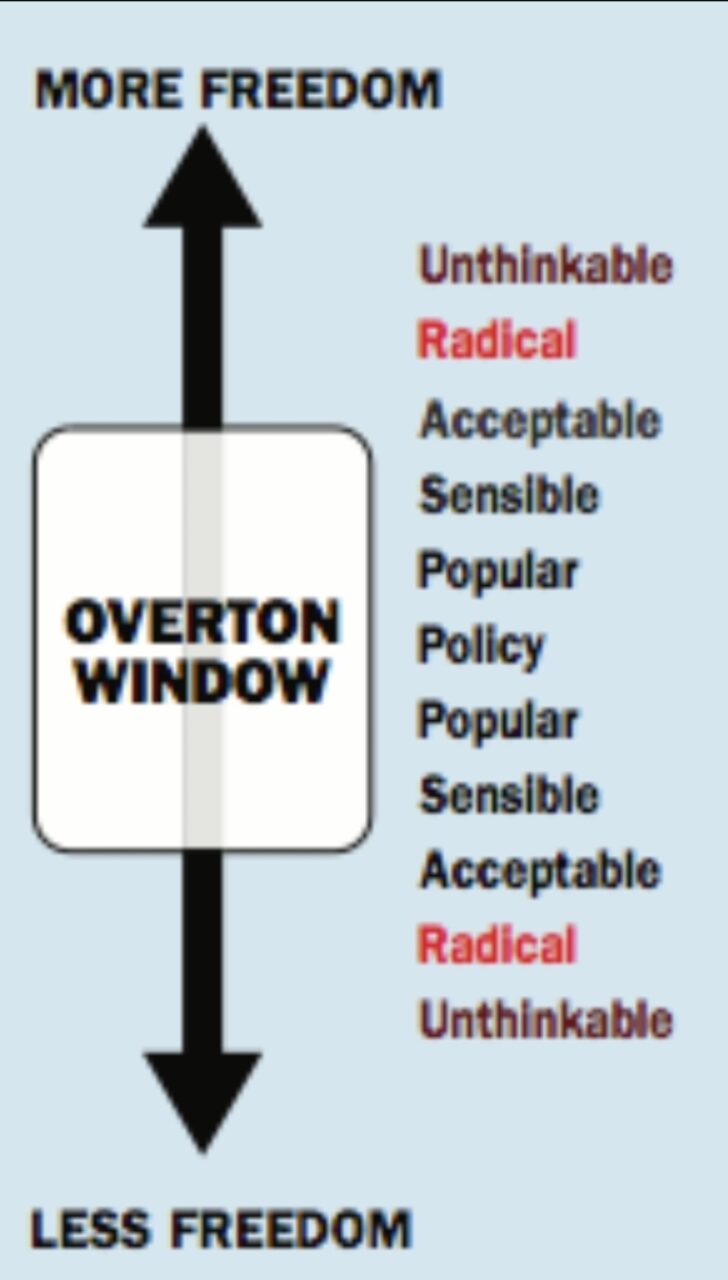
Takeaway: wherever you sit, the non-negotiable center must include a categorical rejection of political violence. No exceptions.
Anyone who’s followed our work knows we’ve been hammering the Overton window—and adjacent models that help you locate yourself as an individual, family, and citizen.
- Tyrants Weapons: Overton Window
- From Liberty to Bondage: How Tyrants Use Amnesia, Apathy, and the Overton Window to Enslave a Nation
- Tyrants’ Weapons: Divide and Conquer – How Perpetual War and the Overton Window Destroy a Nation From Within
- Strangers in Our Own Land: How the Overton Window, Perpetual Crisis, and Prophetic Fulfillment Have Fractured America
The window tells you what’s “sayable.” But we pair it with other lenses: the crisis ratchet (what grows under “emergency” rarely shrinks), preference falsification (people hide their real views until it’s safe), the Motte-and-Bailey move (soft slogans shielding hard policies), and our righteous vs. corrupt traditions frame (habits that carry light vs. habits that carry lies). Together they map not just where politics sits, but how it slides.
You can feel it in your bones: every crisis shifts the sand under our feet. Rules stretch, vocabularies harden, and yesterday’s “unsayable” flips into today’s “mandatory.” That’s the drift we traced in “The Tear in Truth: The Fracturing of a People, a Society, and a Nation.” When trust collapses, people stop sharing premises. Once shared meanings crack—“violence,” “democracy,” “science,” “hate”—the same words become different languages, and factions start building policy on incompatible realities.
In that piece we argued the tear begins upstream, in formation: families, churches, schools, and local civic life either hand down reasoned traditions (with the why) or they hand down reflexes (without it). Reflex cultures default to compliance in calm and coercion in crisis. Reasoned cultures default to argument, due process, and pluralism—even when scared. That’s the difference between a window that widens for debate and a window that shatters into force.
Papola’s warning about political violence belongs in the center of the page. But the fix isn’t only “everyone be nicer.” It’s rebuilding the upstream habits that keep the window intact: tell the truth, protect dissent, sunset “temporary” powers, punish crimes not opinions, and teach children reasons, not just rules. Otherwise, every new shock—pandemic, protest, assassination, war—will keep moving the ground until there’s no middle left to stand on.
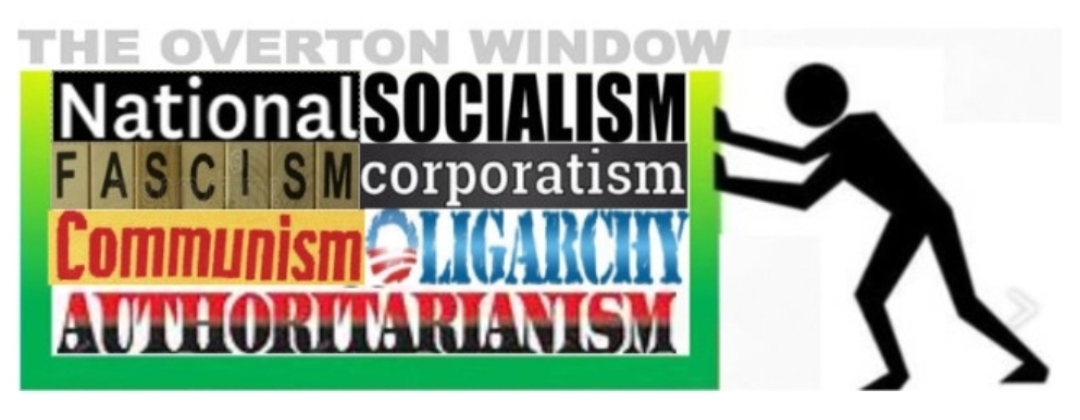
A history detour: how we got “left” and “right”
To make sense of today’s inversion, Papola rewinds to the French Revolution and the literal seating chart of the National Assembly:
- Right (on the Speaker’s right): defenders of the monarchy, the church, inherited hierarchy, and continuity.
- Left (on the Speaker’s left): partisans of rapid social remaking under the banner liberté, égalité, fraternité.
He contrasts that revolutionary project with America’s. The American Revolution threw off a distant crown largely to preserve a functioning civil order and inherited liberties. Its architects—shaped by Locke, Montesquieu, and a Bible-inflected realism about human nature—assumed “men are not angels,” so they engineered checks and balances, divided powers, and due process to cage ambition with ambition.
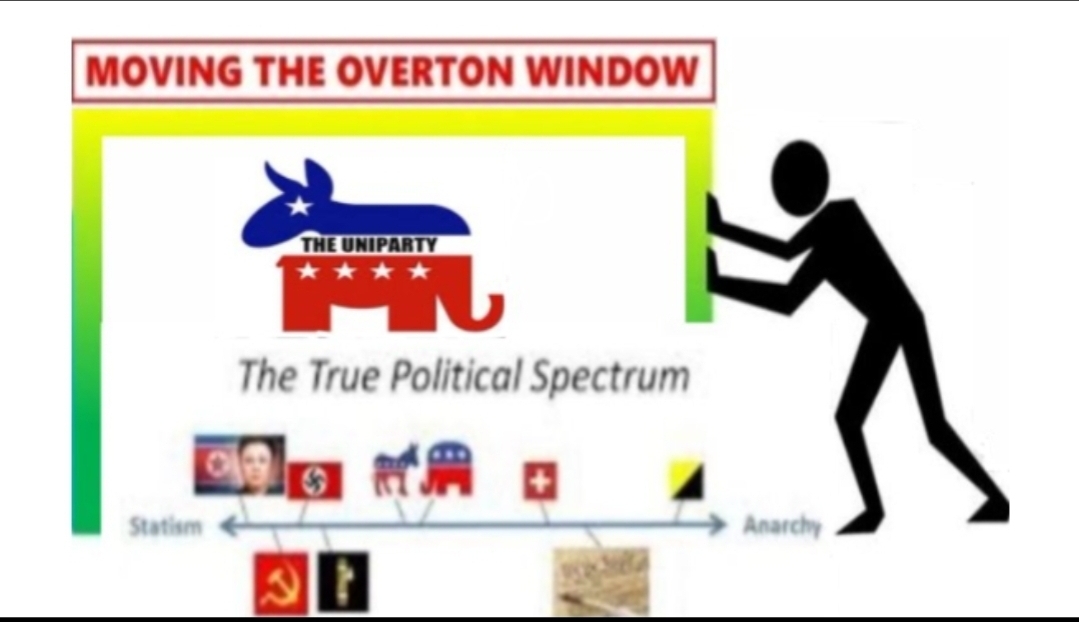
The French Revolution attempted to overturn society itself. After the Bastille’s fall came the Jacobins, the Reign of Terror (mass executions under Robespierre), and—inevitably—the counterrevolution in the form of Napoleon’s empire. In a single decade (1789–1799), “egalitarian remaking” slid into bloodshed and then strongman rule. Papola notes that even among America’s founders, the skeptics (Hamilton, Adams) feared exactly this arc, while the enthusiasts (Jefferson, Paine, with Madison more nuanced) learned the hard lesson by watching Paris burn.
Why it matters now: Papola isn’t doing antiquarian trivia; he’s setting a frame. Across eras, the live fault line is less party label than temperament:
- One pole prizes tradition, continuity, and constraints—the institutional wisdom that tames our worst impulses.
- The other pursues radical remaking—confident that urgency and justice justify breaking inherited guardrails.
That lens, he argues, maps today’s fights better than “Democrat vs. Republican.” When movements normalize extreme tactics (especially political violence), they’re drifting from “debate within bounds” toward the same pattern the French played out: moral fervor → emergency methods → a vacuum filled by coercion. The choice before us isn’t left or right as brands; it’s reform within constitutional guardrails versus remake at any cost.
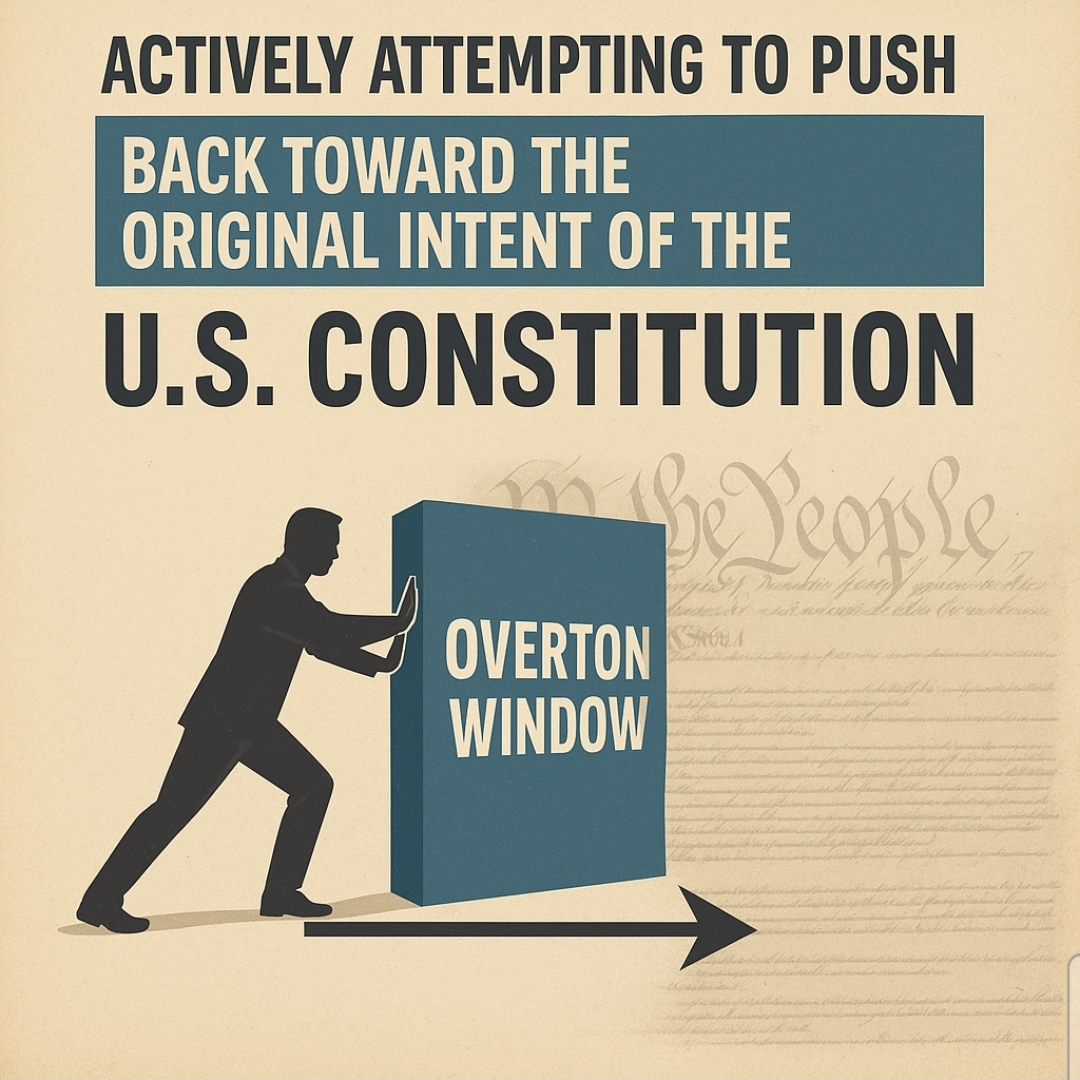
A 1990s time capsule: To show how the center once sounded, Papola rolls a Bill Clinton clip: “hard work, family, faith, responsibility,” restoring the dignity of work, ending welfare “as we know it,” and insisting that when people can work, they must work—paired with help (education, training, child care, medical services). Papola jokes that Clinton didn’t live those values well, but emphasizes the point: this was standard Democratic rhetoric then. By today’s norms, the same lines get tagged “right-wing,” which is precisely his Overton-window argument—what was mainstream left now reads as conservative.
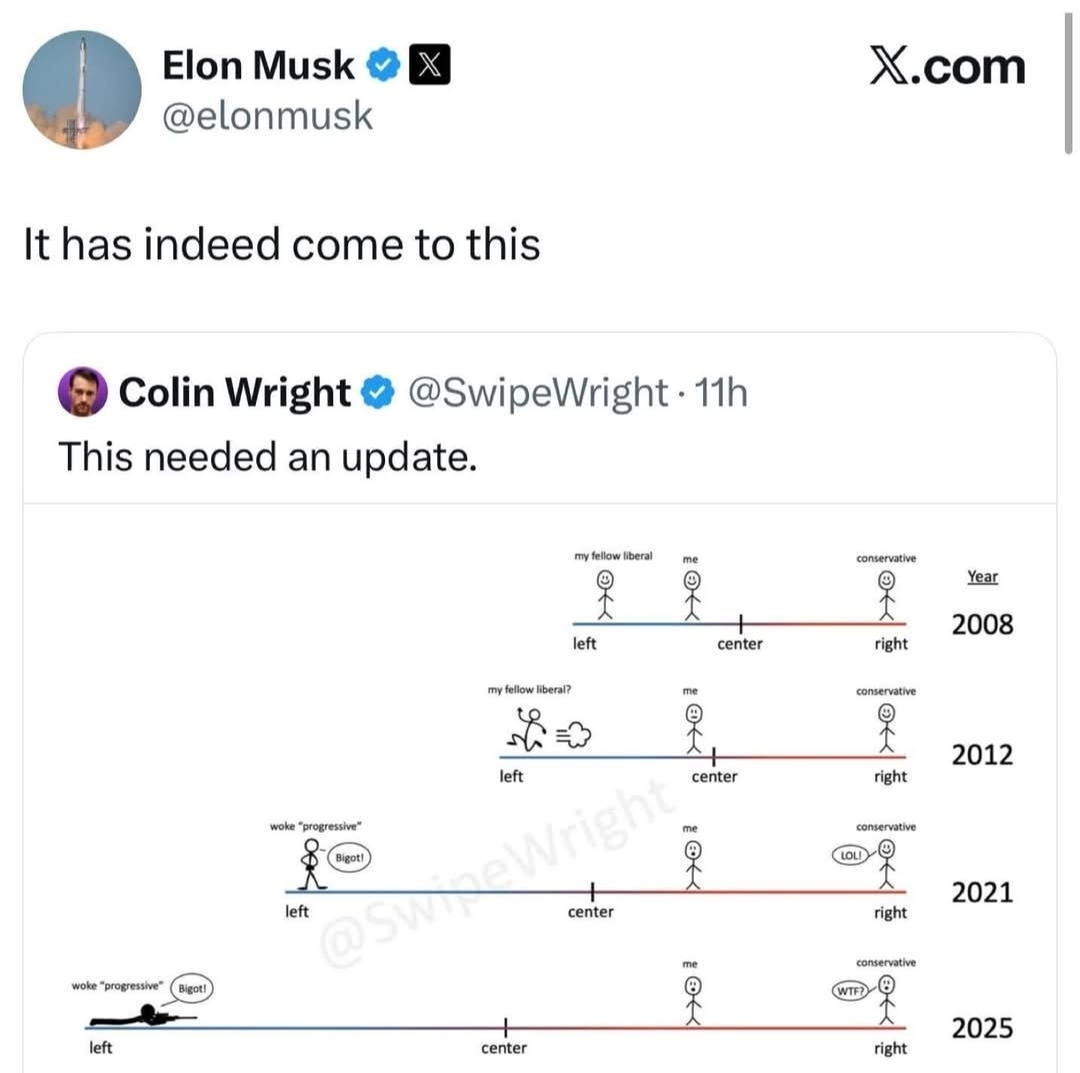
Why it matters now: Papola is setting a frame—tradition versus radical remaking—that he thinks maps onto today’s fights better than party labels do. The Clinton example isn’t nostalgia; it’s an anchor showing how the “acceptable” center moved.
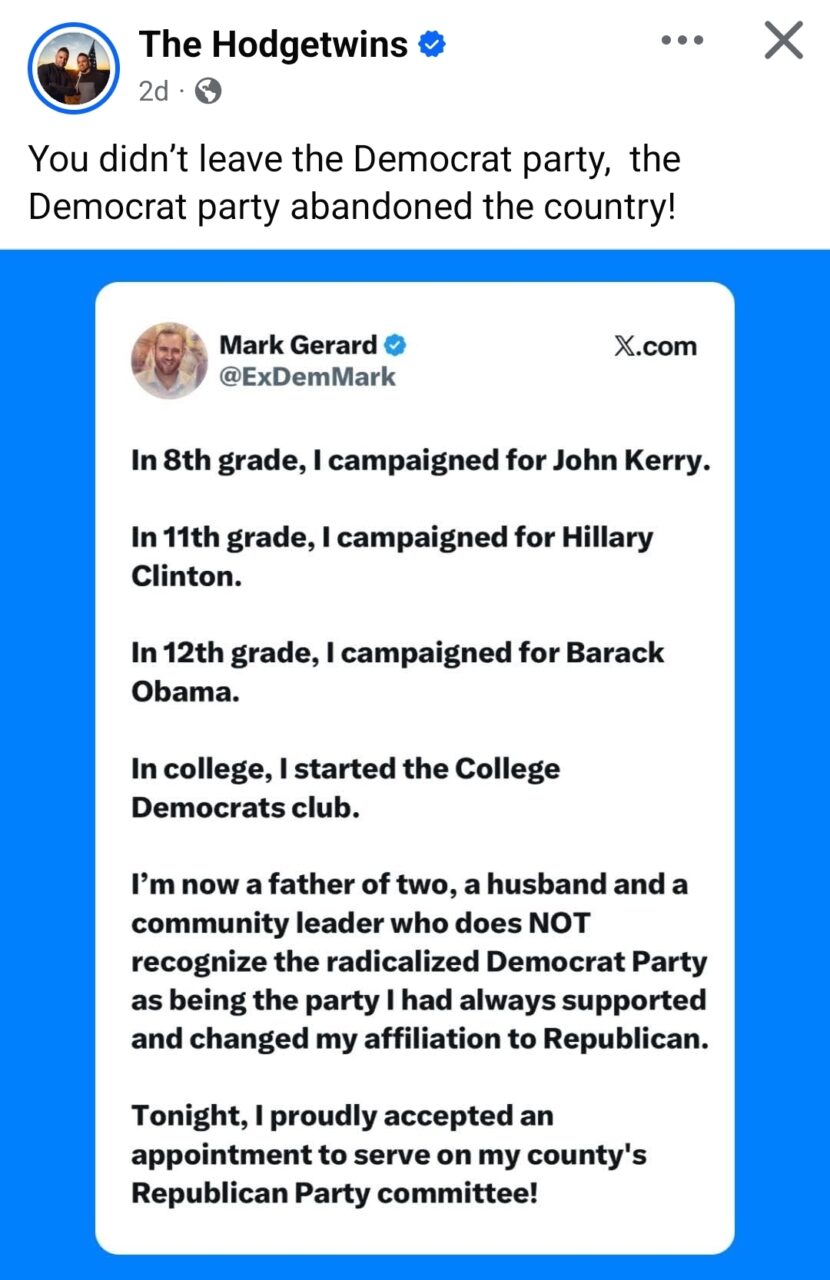
Why some Americans see only one villain
Papola’s claim is simple: our civic catechism spotlights two demons—Hitler and McCarthyism—and leaves the rest in shadow. Students get a vivid morality tale about fascism (often without the hard definitions of corporatism, party-state fusion, and one-party control) and a cautionary fable about Red Scares. What they don’t get, he argues, is anything like the same narrative weight for communist atrocity at scale—Lenin, Stalin, Mao, the gulag, the Great Leap Forward, the Cultural Revolution—or for how “radical liberation” repeatedly curdled into total control.
Two downstream effects he worries about:
- Language drift. “Fascist” becomes a catch-all slur for “political opponent,” not a description of a specific system. Meanwhile, left-wing totalism becomes conceptually invisible; it lacks the ready-made villain in our public square, so it’s easier to excuse as “activism,” “equity,” or “emergency measures.”
- Asymmetrical policing. Institutions treat the far right as the only recognized “outside the window,” while the far left (even when it endorses coercion) often gets exculpatory framing—“mostly peaceful,” “context,” “speech as harm”—and a longer runway before it’s named as illiberal.
To show it isn’t just rhetoric, Papola points to survey signals (caveats acknowledged) suggesting very liberal respondents are notably more open than very conservative respondents to political violence being “sometimes justified.” One poll doesn’t settle a culture, but if even a minority begins to treat violence as “thinkable,” the Overton window isn’t just shifting; it’s cracking.
His ask to liberals (and to anyone who wants a healthy center):
Draw your own bright lines. Don’t outsource guardrails to opponents. Say clearly where the left becomes illiberal—and enforce it internally, the way conservatives are pressed to do on their right flank. Concretely:
- No political violence, ever. No euphemisms, no “by any means necessary.”
- No collective guilt. Individuals are accountable; groups are not proxy perpetrators.
- No speech controls as a substitute for argument. Protect debate, resist compelled speech, reject blasphemy laws by another name.
- No emergency forever. Sunsets, audits, and due process even when your side holds the megaphone.
- No ends-justify-means leaks, doxxing, or lawfare. Tactics used on enemies will be used on friends.
Papola’s bottom line: if you want a broad, liberal society to survive, illiberalism has to be named wherever it lives—including in your own camp.
Class inversion: who’s “left,” who’s “right” now?
Papola’s spiciest claim isn’t about rhetoric; it’s about who sits in which coalition. He argues Democrats increasingly speak for affluent, credentialed, metro professionals—the “new clergy” of media, academia, foundations, and HR—while Republicans, whatever their donor set, are gaining working-class voters, especially non-credentialed men and more Latino and some Black voters than a decade ago. If “left” once meant against entrenched elites, the labels feel scrambled: today’s left often defends the managerial order (“trust the experts, trust the agencies”), while the right houses more of the anti-establishment energy (“decentralize, question the gatekeepers”).
You can see the inversion in issue posture more than party platforms:
- Institutions: Blue zip codes tend to trust elite institutions (universities, legacy media, public-health agencies); red zip codes tend to distrust them and favor decentralization, school choice, localism.
- Speech: The center-left increasingly frames speech as harm that can justify rules and de-platforming; the right has shifted toward speech maximalism and suspicion of “disinformation” boards.
- Economics: Populist Republicans are more open to industrial policy, tariffs, and antitrust pressure on Big Tech—stances once coded left—while Democrats are more likely to defend large public–private bureaucracies (DEI, ESG, public-health rulemaking) as stabilizing.
- Culture & expertise: Blue America valorizes credentials and compliance with expert guidance (COVID mandates, climate governance); Red America valorizes experience and common-sense skepticism of models that override local costs.
Papola calls this class tilt the rise of a managerial left and a populist right. It helps explain why debates feel upside-down: a suburban Democrat may now defend the FBI, the CIA, and university speech codes as guardians of stability; a non-college Republican may rail against Fortune-100 HR and federal rulemaking as cartel power dressed in benevolence. The language (equity, safety, misinformation) is progressive; the effect (centralization, credential gates, rule by guidance) reads as elite self-protection to the other side.
Reality check: the pattern is real but uneven. Democrats still dominate among many union households (especially public-sector unions) and retain overwhelming Black support; Republicans still have plenty of wealthy donors and business-friendly policy planks; regions matter (the Upper Midwest doesn’t vote like the coasts), and single issues (abortion, immigration) can override class effects. Still, as a heuristic, Papola’s frame clarifies why a 1990s Clinton ad about “work, family, faith, responsibility” now sounds right-coded, and why blue-branded institutions are more likely to police speech while red-branded voices champion heterodoxy.
Practical use of the inversion lens: don’t trust party labels; run the who decides / who pays / who benefits test. If a proposal concentrates discretion in distant credentialed bodies, expect today’s left to back it and today’s right to resist. If a proposal devolves power to families, towns, and states, expect the reverse. That litmus won’t predict every vote—but it will keep you oriented when the jerseys don’t match the play.
Family, future, and why radicals lose parents
Papola lingers on that NBC matrix where men who voted Trump rank “having children” #1, while women who voted Harris rank it near the bottom (and even Trump-voting women place it mid-pack). Don’t overread a single poll, he says—but the pattern tracks a common-sense intuition: children lengthen your time horizon. When you’re raising humans who will live with the downstreams of today’s choices, you start preferring reform over rupture.
Why kids bend people toward stability (mechanisms, not morals):
- Time horizon: Diapers → diplomas → decades. Parents price in second- and third-order effects.
- Risk tolerance: Revolutions blow up supply chains—schools, churches, parks, small businesses—the very institutions families lean on.
- Skin in the game: It’s easier to cheer “burn it down” when you don’t have a 7:30 a.m. bus stop and a mortgage.
- Social capital: Kids pull you into webs of reciprocity (PTA, little league, youth group). Those habits reward compromise, not maximalism.
- Violence norming: Parents are more likely to enforce a bright red line against political violence—today’s chaos is tomorrow’s trauma for their kids.
None of this makes parents inherently wiser, and it doesn’t make childless adults nihilists. Correlation ≠ destiny. Plenty of parents are radical; plenty of non-parents are prudential and future-minded. Papola’s point is directional: as family formation declines, coalitions tilt toward short-horizon politics, which is friendlier to purity tests, speech controls, and “ends justify the means” tactics. As family formation rises, parties that promise orderly course corrections tend to gain.
Implications for the window: If you want a sturdier Overton window—where extreme measures stay “unthinkable”—make the future feel ownable. That’s less about slogans than lowering the cost of family formation (safe streets, sane schools, housing that young families can afford), protecting free speech so persuasion beats policing, and rebuilding local institutions that give neighbors something to lose together. Do that, and the median voter gets more patient—which is kryptonite for revolutionary politics on either flank.
A healthier reform agenda: anti-crony, pro-equality under law
Papola isn’t arguing for stasis. He’s arguing that the real fight isn’t markets vs. government—it’s favoritism vs. fairness. Much of today’s “rigged” feeling, he says, comes from a corporatist big-government blend: subsidies and carve-outs, emergency powers that never sunset, agencies captured by the firms they regulate, and cultural gatekeepers who police speech instead of debating it. The good left impulse—equal protection and equal treatment—pairs naturally with the good right impulse—limited, accountable government. The bad left impulse—utopian social planning—tends to end in soft authoritarianism; the bad right impulse—defend every incumbent “tradition”—calcifies privilege.
His “new center” aims straight at concentrated, unaccountable power wherever it hides—boardroom, backroom, or bureaucracy.
Concrete overlap zones (with do-able moves)
1) Kill corporate welfare and regulatory moats
- Zero-base subsidies and tax credits: publish a yearly “corporate welfare budget” and vote it up or down in daylight.
- End industry-specific carve-outs; swap them for broad, neutral rate cuts.
- Replace “too-big-to-fail” rescues with transparent resolution rules: shareholders/creditors eat the loss; no bespoke bailouts.
- Licensing and noncompetes: default to interstate reciprocity for occupations and ban most noncompete clauses to restore worker mobility.
- Antitrust with a spine for state-created moats: attack legal monopolies and entry barriers first (permitting, exclusive franchises, medallions).
2) Sunset “emergency” powers; demand transparency
- Auto-sunsets on emergency declarations (e.g., 30–60 days) unless re-authorized by the legislature.
- After-action audits for every emergency order: what worked, what failed, what cost how much.
- A public “Regulatory Ledger”: every rule lists statutory authority, expected costs/benefits, and a repeal date unless re-justified.
3) Protect speech over speech codes
- Adopt the Chicago Principles (or equivalent) for campuses and public institutions: protect speech; punish threats, harassment, and violence—not viewpoints.
- Ban government “jawboning”: require written, public notices for any content takedown request to private platforms, with quarterly disclosure.
- Whistleblower channels with teeth: protect those who expose wrongdoing regardless of which tribe is embarrassed.
4) Enforce equal justice—consistently
- One standard for all political violence and doxxing, no matter the jersey.
- Publish charging disparities and sentencing data by offense, not by ideology.
- Tighten revolving-door rules (multi-year cooling-off) for prosecutors and regulators moving into the industries they oversaw.
- Clear due-process rights in campus and workplace adjudications; no secret lists, no trial-by-press-release.
5) Make the state legible to the public
- Live dashboards for grants, contracts, and beneficiaries—searchable by name, agency, district.
- Pro-transparency defaults: faster FOIA response clocks, independent ombuds, penalties for stonewalling.
- Open data standards (interoperable records, data portability) to lower switching costs and weaken incumbent lock-in.
6) Restore competition from the bottom up
- Zoning and permitting reform to legalize more housing and small business starts (end NIMBY protectionism that props up insiders).
- Procurement that favors open competition over bespoke, winner-take-all mega-contracts; de-bundle where feasible so smaller firms can bid.
- Education pluralism: funding that follows the learner (charters/ESAs) + rigorous transparency on outcomes.
7) Guardrails on power, left or right
- No “temporary” surveillance without hard sunsets and independent audits.
- Limit executive rule-by-memo; require legislative buy-in for major, economy-wide mandates.
- Budget honesty: no “free” programs—post the price tag and who pays, before the vote.
The through-line: If rights are equal, the law must be neutral, and power must be auditable. That’s where reformers from both sides can shake hands: end privileges, reopen entry, tell the truth in public, and keep the rules the same no matter who’s in charge.
Where Papola convinces—and where he overreaches
Strongest notes
1) The violence line.
Papola’s clearest win is his bright red line: political violence must stay outside the Overton window. He cites survey data showing “very liberal” respondents more likely than “very conservative” respondents to say violence can be “sometimes justified.” He concedes one poll isn’t gospel, but uses it properly—as a civic warning flare, not as proof of anyone’s guilt. His standard is simple and exportable: no exceptions, no euphemisms, no “but our side is provoked.” That’s a norm worth repeating in every camp.
2) Institutional asymmetry.
The segment catalogs how dissenters are tagged with maximal labels (bigot, fascist, “hate group”) not just by trolls but by mainstream actors—journalists, politicians, and NGOs—especially around contested issues like gender policy and DEI. Even if you think some targets deserve sharp criticism, Papola’s broader point holds: a culture that treats disagreement as heresy hollows out argument and drives people underground or into other tribes. He’s persuasive that label inflation corrodes shared reality.
3) Cronyism as the real “system.”
Papola’s reform energy isn’t anti-market; it’s anti-privilege. Subsidies, carve-outs, revolving doors, and regulatory moats look like left/right fights on cable news—but feel the same to ordinary people trying to enter a field or compete with an incumbent. His “new center” idea—equal rights, neutral rules, transparent power—lands because it gives both reformist left and institutionalist right something real to do together (kill corporate welfare, end jawboning, sunset emergency powers, enforce due process consistently).
Weaker or contested
1) History analogies can over-flatten.
The French Revolution vs. the American Revolution is a useful contrast (overthrow society vs. throw off a distant crown). But the leap from then to now—“today’s radicals = Jacobins”—can blur distinctions between, say, violent revanchism and democratic reform (zoning liberalization, school choice, procurement transparency). Analogy is a lens, not a verdict; keep it as context, not as a catch-all diagnosis.
2) The curriculum critique needs precision.
Papola argues we underteach communist atrocities while over-indexing on Hitler/McCarthyism. In some districts that’s surely true; in others, the Cold War, Maoist famine, and the Gulag are front and center. K-12 content is wildly uneven. The fix isn’t a counter-myth; it’s better curricula and primary sources across the board—teach Nazi and communist crimes, teach how fascism fuses state and corporate power, and teach how free societies fail when they demonize dissent.
3) “Class inversion” is real—but not total.
He’s right that education polarization has surged: Democrats now draw more college-educated, professional voters; Republicans are gaining among working-class and non-credentialed men. But coalitions are still patchwork: suburban women trend blue on abortion and guns; Latino voters are splitting by region, religion, and union density; Black voters remain largely Democratic but show movement among men on crime, schools, and small business. As a heuristic, Papola’s inversion clarifies; as a total map, it needs local overlays.
How to keep the strong, temper the weak (practical add-ons):
- Pair the violence red line with cross-partisan statements from leaders every time a flashpoint hits. Make it muscle memory.
- Replace labeling with claims → reasons → evidence → proposed remedy. If you can’t state the other side’s argument well enough to earn their “steelman” nod, you haven’t earned the denunciation.
- On cronyism, publish an annual, plain-English corporate welfare budget and force an up-or-down vote.
- In civics/History, commit to comparative atrocity and institutional failure across ideologies; use primary documents and survivor testimony, not just cartoons of the “other side.”
- Treat class inversion as a moving target; check county-level results and issue polling before you infer a mandate.
The constructive path back to a usable middle
Re-normalize debate.
Don’t nostalgia-trip—rebuild habits. In homes, classrooms, newsrooms and councils, replace labels with arguments: Claim → Evidence → Counter-evidence → Provisional verdict. Make “steelman first” a rule of engagement; keep a public knowns/unknowns ledger during controversies. In schools, schedule standing pro/con forums on hot issues (gender policy, election rules, wars) with timeboxed rebuttals instead of disinvites. In media, distinguish news, analysis, and opinion again—then require on-air/source notes for any charged claim.
Codify the non-negotiables.
Put the Overton red line in writing: no political violence, no euphemisms. Parties, campus groups, and platforms should adopt explicit non-incitement and non-deplatforming norms: protest = yes; threats, doxxing, and shutdown tactics = no. Pair that with viewpoint-neutral speech policies (protect the right to argue, not just favored viewpoints). On justice, commit to equal standards that bind friends and foes—transparent charging memos, consistent bail/protest rules, body-cam release clocks, and independent IG reviews across jurisdictions.
Attack favoritism, not markets.
Papola’s most constructive target is cronyism. Start with what both sides can sign: publish a plain-English corporate-welfare budget; subject tax credits, subsidies, and loan guarantees to automatic sunsetting; ban “urgency” riders for non-emergency spending. Replace protectionist licensing and bespoke carve-outs with open entry plus liability. Tighten revolving-door cooling-off periods and disclose regulator–industry meetings. Use competition (procurement auctions, school choice, portable benefits) to discipline power better than blue-ribbon committees ever will.
Rebuild federalism and local accountability.
Push decisions down where exit and feedback are cheap. Pilot contested policies at city/state scale and require public outcome dashboards (costs, wait times, safety, literacy, emissions—pick the metric that fits). Reserve truly national actions for truly national problems; otherwise, let jurisdictions compete. In practice: default-to-local on schooling, zoning, and many safety rules; sunset emergency powers unless re-voted; require costed alternatives before any one-size-fits-all rule.
Name your own fringe.
Papola’s challenge to liberals applies to everyone: set your red lines and enforce them internally. Progressives can explicitly repudiate political violence, de-platforming, and revolutionary LARPing; conservatives can repudiate race-baiting, “enemy of the people” demagoguery, and vigilante talk. Build intramural accountability—candidate pledges, caucus rules, and community norms that penalize your side’s wildcards without waiting for the other tribe to pounce.
Invest in the future.
The poll Papola cites—parents prioritizing kids—maps to a stabilizing instinct: skin in the game cools taste for rupture. Make “future-friendly” nonpartisan again: legalize abundant housing (zoning reform), expand school choice and portable education dollars, protect faith-and-family practices (Sabbath rhythms, conscience rights), streamline childcare co-ops, and prefer child tax relief over bureaucratic programs. A politics that can raise children together can disagree without detonating.
How to start this month (pick two):
- Host a debate with “steelman-first” rules; publish the knowns/unknowns list afterward.
- Ask your city to publish a corporate-welfare line-item and put it to an up-or-down vote.
- Propose a speech policy that’s viewpoint-neutral and bans shutdown tactics.
- Back one local pilot (reading curriculum, permitting overhaul, or policing audit) with public metrics.
- Write (and sign) a one-page “name our fringe” standard for your own group.
This isn’t mushy centrism. It’s Overton-window repair: hard red lines on violence and speech, equal-justice guardrails, anti-crony reforms that free newcomers to compete, localism that lets pluralism work, and a bias for the people raising the next generation.
Final word
Dad Saves America voices what a lot of people feel in their bones: the center wobbled, language turned into a weapon, and the Overton window didn’t just shift—it cracked. You can push back on parts of the history detour and still accept the core charge: a free society only works when we keep political violence unthinkable, keep speech free enough to test bad ideas in daylight, and keep power small and transparent enough to be corrected.
If there’s a coalition worth building after a decade of shattered norms, it isn’t a vibe—it’s a checklist:
- No violence, no shutdowns. Protest hard, argue harder; reject intimidation, doxxing, and riot-as-politics from any side.
- Speech over speech codes. Swap labels for arguments; protect dissent so the public can sort sense from nonsense.
- Anti-crony, pro-equal justice. End carve-outs and corporate welfare; apply the same rules to allies and opponents.
- Local first, accountable always. Pilot big ideas close to citizens and post the results; reserve “national” for what truly must be national.
- Name your own fringe. Draw your red lines—and enforce them inside your camp.
- Bet on families and the future. Make it easier to marry, have kids, build a home, and choose a school; a people invested in tomorrow are less tempted by ruinous shortcuts today.
That’s not mushy centrism—it’s democratic maintenance. Reopen the window by restoring the guardrails: nonviolence, free debate, equal law, limited and checkable power. Do that, and you don’t need unanimity on history or ideology. You just need enough of us to say: we’ll fight cronyism, protect dissent, and wager on families and futures over fever dreams.
The Overton Window Has Been Shattered (host: John Papola).
1) Opening frame: “It’s not me—it’s the left”
- Many ex-Democrats say they didn’t leave the party; the party left them.
- Host’s setup: the left/right landscape has shifted so fast that “center” folks feel politically homeless.
2) The meme(s): 2008 → 2021 → 2025
- Reference to Colin Wright’s viral meme: the left keeps moving left, pushing 2008-era liberals into today’s “right.”
- Updated post–Charlie Kirk reactions: host calls the 2025 state “more disturbing,” implying accelerating leftward drift.
3) Anecdotal evidence via thread from Wright’s partner
- She says they grew up California liberals; began publicly criticizing parts of trans policy/DEI.
- Claims they were labeled with a long list of pejoratives (transphobe, fascist, etc.).
- Key point: the labels came not just from trolls but from mainstream journalists, Democratic politicians, and major NGOs (SPLC, GLAAD, ACLU).
- Host’s takeaway: this “asymmetry” of radicalism and denunciation is pushing liberals to the right.
4) Realignment examples
- 2024 election joke/meme: “Democrats won—Elon, Tulsi, Trump, and RFK (all former Democrats).”
- Reagan clip: I switched parties because they were different, reinforcing the “party left me” theme.
5) What is the Overton window?
- Definition (via Joseph Overton): the range of politically acceptable ideas; policy entrepreneurs try to move their ideas into the window.
- “Median voter” reminder: the middle wields outsized power.
- Claim: Accepting political violence as “sometimes justified” is evidence the window has shifted dangerously.
6) 1990s baseline comparison (“peak Western civ”)
- Bill Clinton ad: hard work, family, faith, responsibility; welfare reform (“when people can work, they must work”).
- Host’s point: that center-left rhetoric now sounds “right-wing” by today’s standards; shared civic values have eroded.
7) Where “left” and “right” came from (French Revolution primer)
- Seating in the French National Assembly: right = tradition/monarchy/church; left = radical change/equality.
- The “three estates” cartoon: clergy + aristocracy riding the commoner.
- Motto: “Liberté, Égalité, Fraternité” (likened—but not identical—to U.S. “life, liberty, pursuit of happiness”).
- U.S. Founders’ split:
- Hamilton/Adams skeptical of the French Revolution (too utopian, violent).
- Jefferson/Thomas Paine/Madison more sympathetic to the French upheaval.
- Outcome recap (fast!):
- 1789–92: monarchy falls.
- 1792–94: First Republic; Reign of Terror (Robespierre; mass executions).
- 1799: Napoleon becomes emperor.
- Host’s moral: radical egalitarian revolutions veer violent and totalizing; America’s revolution was restorative (throw off a distant crown), not remaking human nature.
8) Human nature & the American design
- Rights precede government (Locke/Montesquieu; Christian anthropology).
- People aren’t angels → checks & balances; separation of powers to restrain ambitions.
9) Today’s “left extremism” markers
- Cites a YouGov poll: very liberal respondents reportedly endorse political violence at higher rates than very conservative respondents (host says ~5x).
- Desire to “knock off” the rung where violence is thinkable; restore a non-violent Overton center.
10) “Jacobin” then and now
- Notes the 2010 launch of Jacobin magazine as a self-conscious nod to radical French lineage.
11) Jordan Peterson’s challenge to liberals
- Liberals should define and police left-wing extremism; we lack clear “red lines” for when the left goes too far.
12) Why the public sees only one “ultimate villain”
- History emphasis: Hitler = the archetypal evil; McCarthyism = archetypal right-wing abuse.
- Host’s critique: students aren’t equally taught the scale/evil of communist regimes (Lenin/Stalin), so “Nazi” becomes the only slur and the left’s own extremes evade scrutiny.
- Adds: fascism’s economics included heavy state control; terms get muddled (people use “fascist” as catch-all “bad”).
13) Today’s class inversion (who is “left,” who is “right”?)
- Claim: Democrats are now the party of wealthy, college-educated (often white) elites—like the old “estates.”
- Republicans increasingly working-class.
- Visual analogy: GOP’s base = the commoner at bottom; media/academia (“new clergy”) + corporate elites perched atop.
- Conclusion: old left/right labels don’t map well; it’s confusing even for the host.
14) So what anchors us? Values/faith
- NBC matrix: “having children” ranked #1 for Trump-voting men; near the bottom for Harris-voting women (and mid-pack for Trump-voting women).
- Interpretation: wanting kids = investment in the future = less appetite for revolutionary upheaval.
- Claim: the modern left’s “autoimmune” attack on institutions now targets family and the future itself.
15) Where should change come from now?
- Pew 2021 clusters: left largely united behind “more state action; more programs”; right less homogeneous, with a large populist right that distrusts the current economic order.
- Host’s reform path: tackle corporatist big-government privileges (cronyism, unequal treatment under the law).
- “Good left” impulse = equality under the law; where it goes wrong = utopian social planning → strongman rule.
16) The practical bottom line
- Healthy politics = tension between tradition (keep what works) and reform (fix what’s broken), without political violence.
- The Overton window should center on a shared future and civic peace.
- Call-out to liberals: police your radicals; reject violence and anti-family extremism.
- Promise from the “reasonable right”: “We’ll take you seriously when you clean house.”
17) Closing call
- Audience ask: did the history tour help you frame what’s going on?
- Links promised at DadSavesAmerica.com; weekend sign-off.
Quick notes & caveats
- This summary reflects the host’s interpretations (e.g., how often schools cover communist atrocities; what polls “prove” about violence attitudes; who counts as “elite”).
- Some claims (e.g., fascism’s position on the left/right spectrum; exact magnitude of violence support in polls; party demographics) are debated. The episode uses them illustratively to argue the Overton window has shifted and that left radicals aren’t being checked.

